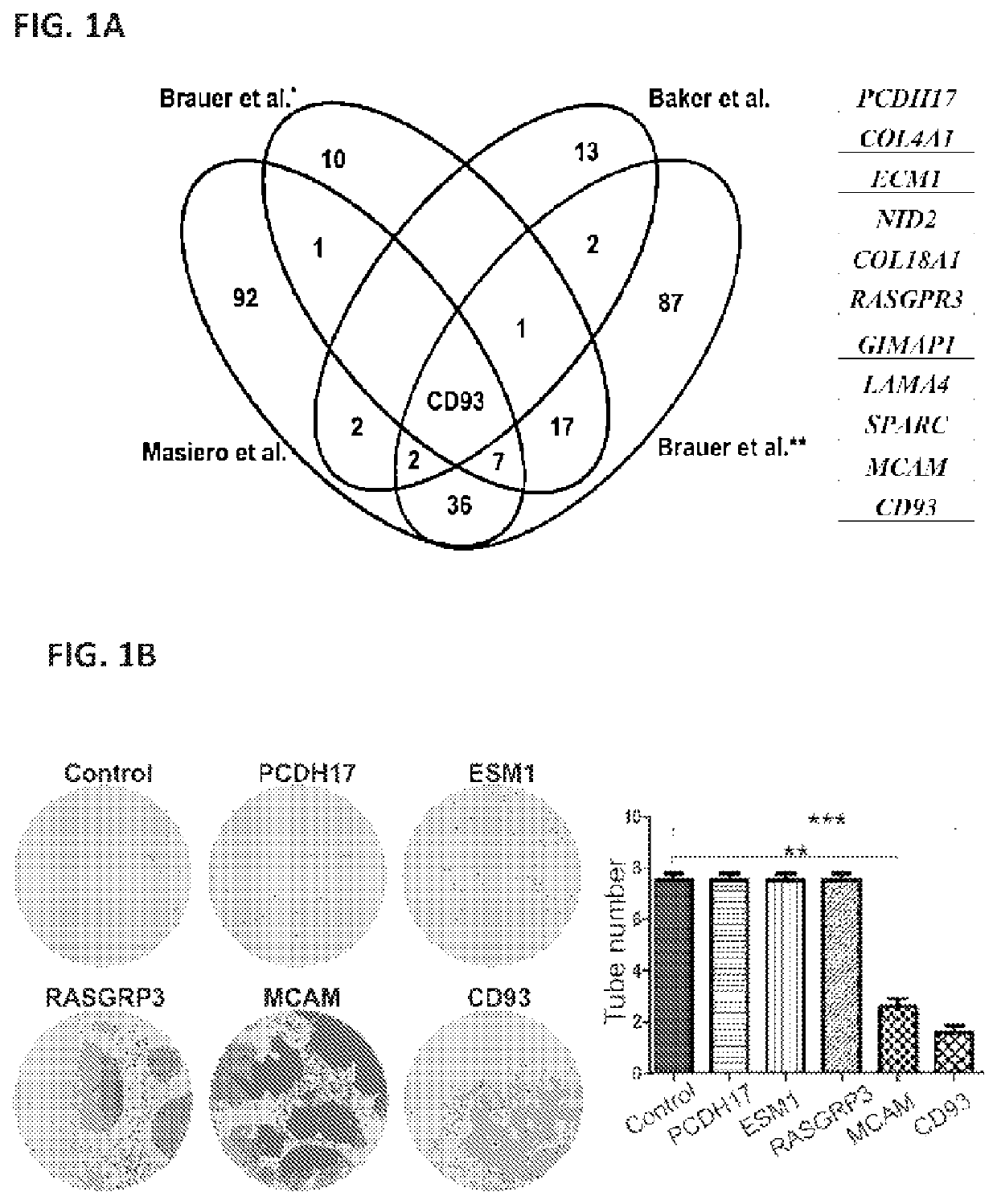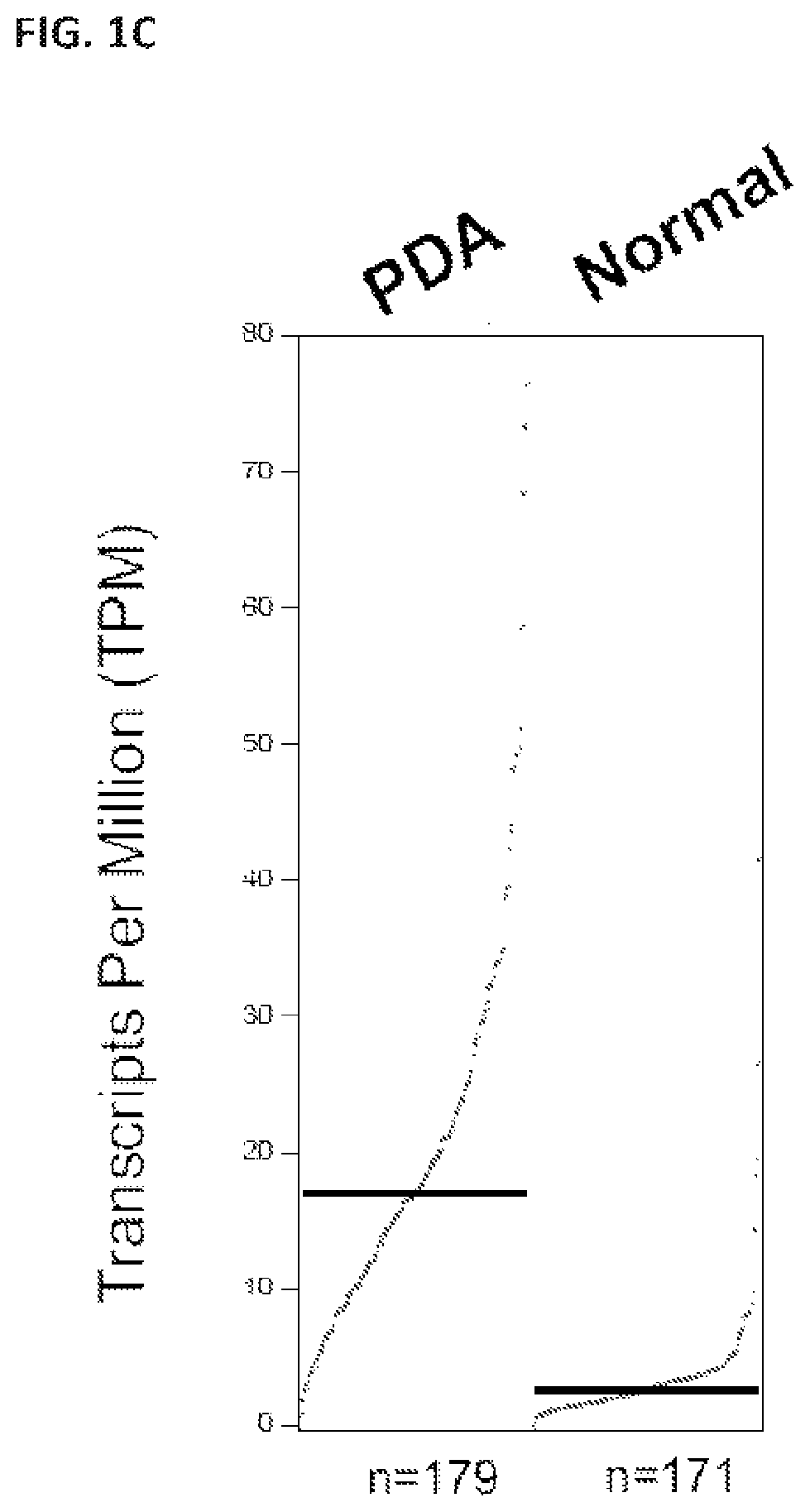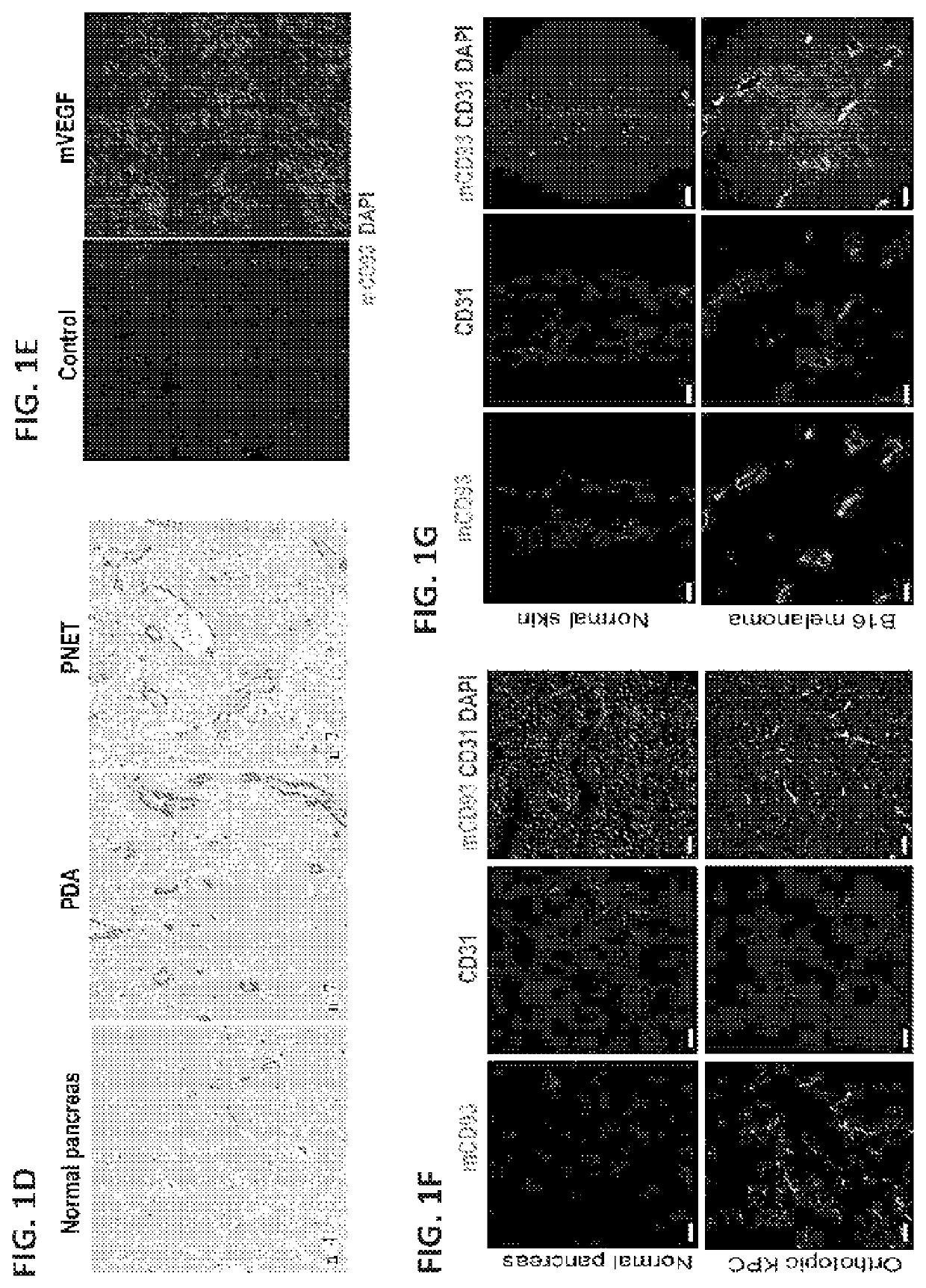Methods and compositions for treating a disease or disorder
- Summary
- Abstract
- Description
- Claims
- Application Information
AI Technical Summary
Benefits of technology
Problems solved by technology
Method used
Image
Examples
example 1
[0398]To identify new targets which could be responsible for VEGF inhibitor-induced vascular normalisation, gene expression profiles were studied in tumor ECs under the treatment of VEGF inhibitors in viva from four recently published RNA-Seq datasets (28-31). Three databases were from xenograft tumor models treated with VEGF inhibitors, and one was from human neuroendocrine tumors. Genes which were consistently reduced across multiple datasets with a cutoff log2 fold change <−0.5 were sorted out. Eleven genes whose expressions were significantly reduced by VEGF inhibitors in at least three datasets were identified (FIG. 1A). Most of them are transmembrane proteins or extracellular matrix proteins (Sec Table 2). Five candidate genes upregulated in tumor ECs were selected their functions were tested in a tube formation assay using freshly isolated human endothelial cells from blood vessels (HUVEC). Among them, knockdown of CD93 genes led to significant reductions of tube formation in...
example 2
[0401]To evaluate the possible effect of CD93 in vivo, a mAb (clone 7C10, rat IgG) specific for mouse CD93 was generated by immunizing a rat with mouse CD93 fusion protein. C57BL / 6 mice were implanted with KPC tumor line derived from KPC transgenic mice (36). When tumors became palpable, mice were treated with 7C10 twice a week for two weeks. The 7C10 alone was able to slow KPC tumor growth by about 60% (FIG. 2A). The IF staining of tumor tissues did not show a clear change of CD31− microvessel density upon 7C10 treatment. However, the vascular length was increased significantly more than 1.8-fold, and there was a 3-fold increase in the percentages of blood vessels with circular shape in tumors treated with 7C10 (FIG. 2B). Moreover, after the treatment, there was approximately a 3.5-fold increase than the control of pericyte-covered blood vessels, based on co-staining of NG2 and CD31 (FIG. 2C). In line with this observation, there were over twice as many as alpha smooth muscle actin...
example 3
[0403]A human genome-scale receptor array (GSRA) was employed to search for counter-receptor of CD93. IGFBP7, a secreted protein of the insulin growth factor binding protein (IGFBP) family, is the only positive hit out of ˜6.600 human transmembrane and secreted proteins in the library (FIG. 4A). The addition of a human CD93 mAb (clone MM01) or IGFBP7 mAb (clone R003) significantly reduced the binding IGFBP7 protein to CD93− transfected 293 cells (FIG. 4B). Recombinant IGFBP7 protein bound HUVEC line positively and the CD93 mAb MM01 completely eliminated this binding activity (FIG. 4C), demonstrating CD93 mediates the binding of IGFBP7 protein to HUVEC line. Furthermore, IGFBP7 could be immunoprecipitated from HUVEC cell lysates with a CD93 mAb, indicating the CD93-IGFBP7 interaction occurs naturally in endothelial cells (ECs) (FIG. 4D). The affinity measurement of the IGFBP7 / CD93 interaction by microscale thermophoresis (MST) showed a KD Value at 53.13±20.19 nM (FIG. 4E). The intera...
PUM
| Property | Measurement | Unit |
|---|---|---|
| Interaction | aaaaa | aaaaa |
| Chemotherapeutic properties | aaaaa | aaaaa |
Abstract
Description
Claims
Application Information
 Login to View More
Login to View More - R&D
- Intellectual Property
- Life Sciences
- Materials
- Tech Scout
- Unparalleled Data Quality
- Higher Quality Content
- 60% Fewer Hallucinations
Browse by: Latest US Patents, China's latest patents, Technical Efficacy Thesaurus, Application Domain, Technology Topic, Popular Technical Reports.
© 2025 PatSnap. All rights reserved.Legal|Privacy policy|Modern Slavery Act Transparency Statement|Sitemap|About US| Contact US: help@patsnap.com



